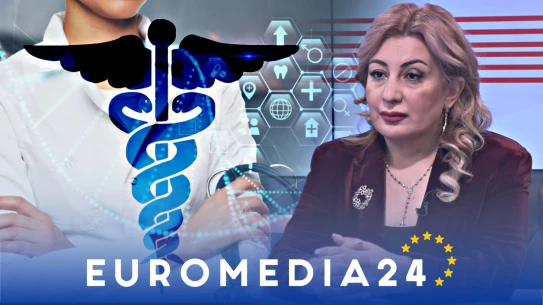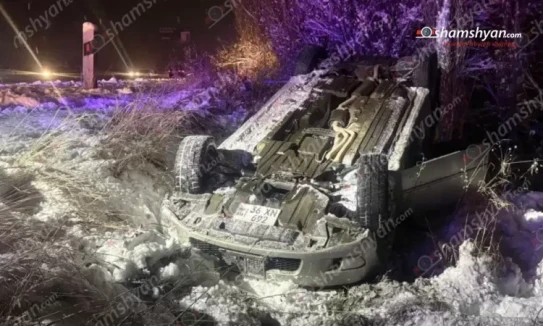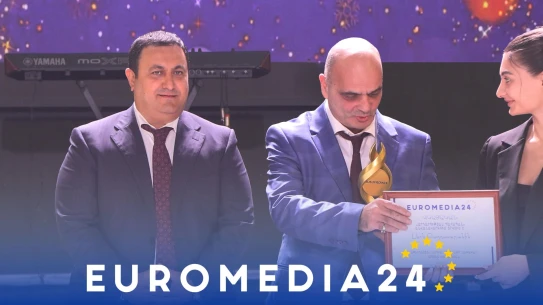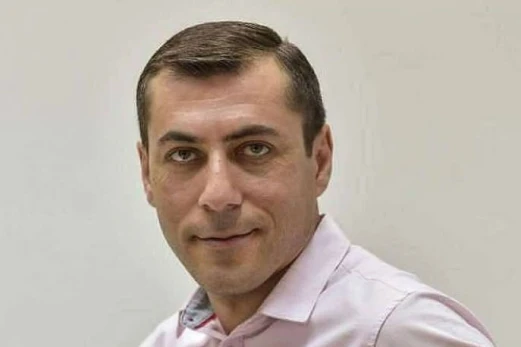Spertsyan reacted to being recognized as the best football player of the year in Armenia
"Toyota Altezza" left the traffic lane and ended up in the trees
In the USA, the entrepreneur distributed 240 million dollars in bonuses to the employees
Surenyan said how long the rainfall will continue in Yerevan
News
Zelensky will answer for his statements. Zakharova
Trump commented on the attack on Putin's residence by the Armed Forces of Ukraine
If Shara wins tomorrow, I will give her an apartment in Yerevan. Arman Tsarukyan
Ushakov. Trump informed Putin about negotiations with the Ukrainian side
Trump and Putin had a phone conversation
Zelensky announced that the Russian army is preparing to attack government buildings in Kiev
Kim Jong-un participated in strategic cruise missile launch exercises
Armenia and Turkey have decided to facilitate the process of issuing visas
For more than 36 hours, urgent works have been carried out without breaks at the substation that caught fire in Yerevan
China has started military exercises around Taiwan
Fire in two offices of insurance company of Abovyan city
The preliminary investigation of the criminal proceedings initiated on obstructing the exercise of the right to vote and forcing people to participate in the gatherings before the 2021 elections has been completed.
Zelensky's goal in the meetings with Trump was noted in the West
His Holiness visited Saint Michael today
From January 1, every tourist entering Georgia must submit a document on the availability of insurance
Zelensky. During the meeting with Trump, no agreement was reached regarding the territories and the Zaporozhye NPP
What kind of economic growth or a strong army can we talk about in a country where people can do calculations alone with matches? Samvel Martirosyan
Zelensky. Trump offers Ukraine 15 years of guarantees, while Kiev wants 30
Trump called the question about the role of the United States in ensuring the security of Ukraine stupid
The US will allocate nine times less to UN humanitarian programs than in previous years

French actress Brigitte Bardot died
The 12th century Armenian church door will be moved to the Armenian History Museum
In 2035, there may be clashes between humans and robots in Europe. Europol
The winner of Eurovision 2024 has refused the trophy because of Israel's participation
Scientists have discovered the chemical composition of small asteroids
A gene editing method has been developed to destroy HIV
Signals emitted by comet 3I/Atlas confirm its natural origin
A new life form has been discovered in Chernobyl
Revival of memory and culture. "The love story of Artsakh" returned to the stage (video)
The treasures of the depository-museum of St. Etchmiadzin Cathedral
People's Artist of Russia Vladimir Simonov died
It became known where the first people came from
Chimpanzees have been found to show signs of rational thinking
A terrifying bat signal has been detected in space
Scientists warn about the deadly danger of vaping
Scientists have discovered the secret to alleviating knee pain
Scientists have found out what the void of space is made of
Scientists have recorded the brightest black hole explosion in history
Two powerful flares were recorded on the Sun in one hour
The International Festival "Theatron" aims to strengthen the cultural dialogue between Armenia and the Francophone world
























